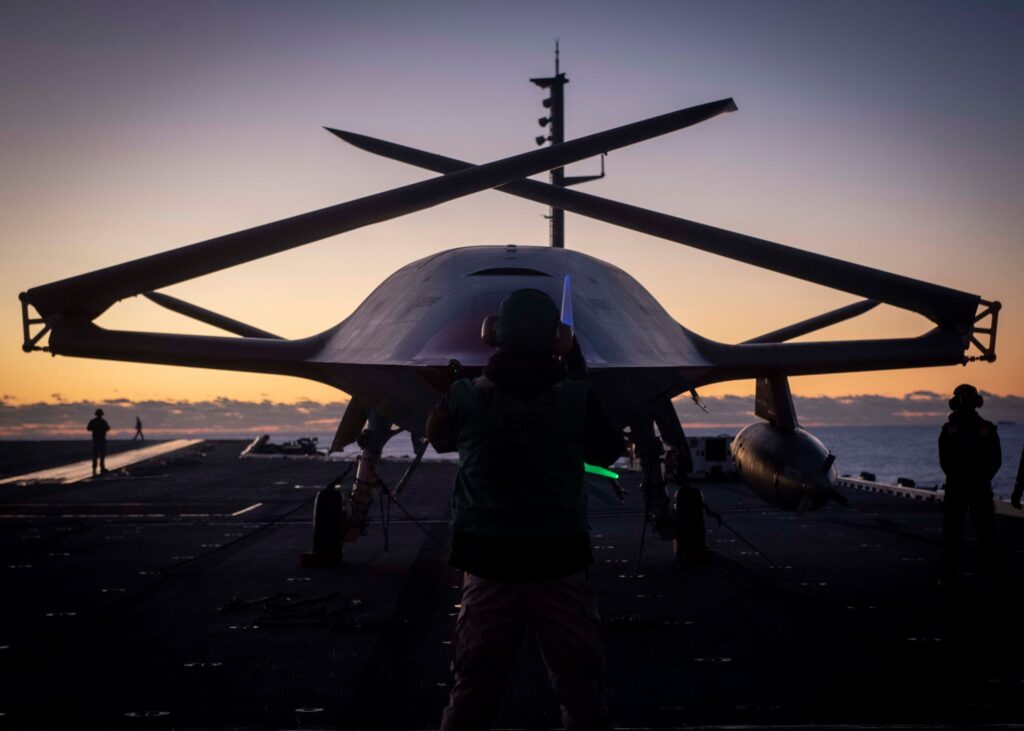
NATIONAL HARBOR, Md. — This year’s Sea/Air/Space conference occurred at a critical time for the sea services as they confront strategic rivals in multiple geographic areas and warfare domains.
Aging force structure in all three sea services makes in harder to deter aggression. New technologies and concepts offer the naval services tools to improve their ability to deter and to defend and defeat opponents as needed. In addition, the Navy faces significant financial hurdles in recapitalizing the undersea component of the nuclear deterrent in the Columbia-class ballistic missile submarine while at the same time trying to build a new force for 21st century missions.
The challenge is to maintain the readiness of existing, legacy forces while both recapitalizing existing capabilities, and transitioning to future forces. These new force structure components are likely to include more unmanned units, connected within robust networks capable of fighting and winning inside opponent-imposed limitations such as anti-access/area denial bubbles.
Aging Force Structure
Many of the sea service’s existing platforms and systems date from the late Cold War and the 1990s. They have seen extensive service in the first Gulf War, operations in the Balkans in the 1990s, and since 2001 in combating rogue states and violent extremists in Iraq, Afghanistan and around the globe. Limited defense budgets have forced the postponement of needed maintenance between deployments.
Like aging automobiles that do not get serviced at the dealer garage when needed, many ships, aircraft and submarines have equipment problems that prevent them from accomplishing their missions. Famous Cold War-era ship classes like Ticonderoga–class Aegis cruisers, Los Angeles–class nuclear attack submarines, many of the Navy’s amphibious warfare ships and even the earlier units of the post-Cold War Arleigh Burke–class destroyers are approaching and, in some cases, have exceeded their planned service lives. Keeping these aging units on the front lines of global deterrence imposes additional costs on the services and the taxpayers. Like the aging automobile, these costs soon come to outweigh the utility of keeping these ships in commission.
Active Adversaries
Across the period of the post-Cold War era (1991 to the present) U.S. adversaries have not been idle in analyzing U.S. capabilities and fielding platforms and payloads to combat them. Both the People’s Republic of China and Russian Federation have watched and learned from U.S. joint force operations of the last 30 years. The PRC remains the “pacing threat” and now fields a fleet of over 350 combatants, along with numerous coastal and maritime militia forces. The PRC also has an extensive force of land-based cruise and ballistic missiles, aircraft and sensors that threaten U.S. forces thousands of miles from the Chinese coast.
The Russian Federation has been unable to modernize its forces as planned ands suffers from severe planning and logistics shortfalls as evidenced by its botched and bogged-down invasion of Ukraine. The Russian navy submarine force, however, while much smaller than its Cold War Soviet equivalent contains a new generation of very quiet submarines including the Borei–class SSBN, the Yasen–class guided missile submarine armed with Kaliber cruise missiles and several special purpose submersibles that could cut seabed cables and otherwise harm underwater infrastructure.
Like a submersible version of the German World War II battleship Bismarck, Russian submarines like the Yasencan threaten multiple targets at sea and ashore. In addition to China and Russia, North Korea continues to menace its neighbors with both conventional and now nuclear weapons while Iran contributes to instability in the Middle East with its regime’s Revolutionary Guard Corps that harasses shipping, fires random missiles and threatens mine laying operations in the key Strait of Hormuz through which most Middle East oil moves to global customers.
Violent extremists, while beaten back in many areas, remain a threat and like the Houthis in Yemen field increasingly effective weapons, including cruise missiles. The overall threat environment to the U.S. sea services is likely higher than at any point since the end of the Cold War.
Path to the Future
The U.S. sea services have equally done hard thinking on current and future threats and are building a path to future joint force far more capable than present, legacy platforms. Unmanned systems technology is spiral developing at a dizzying rate with both small and medium unmanned surface and small unmanned underwater units now available for intelligence, surveillance and reconnaissance missions. The Navy will soon field the MQ-25A Stingray unmanned tanker aircraft, substantially improving the range of carrier-based aircraft.
The Marine Corps plans to use many unmanned systems in support of its new littoral regiments and the Coast Guard also plans to use more unmanned systems. These and new manned ships including the Constellation-class frigates, DDG-X, light amphibious warship and others provide a path toward a larger, 500-ship Navy with both manned and unmanned units to better deter and if necessary, defeat opponents in multiple warfare domains.
Team Effort
The move to a future force of capable manned and unmanned naval forces requires a team effort of civilian policy officials, military officers and industry to reach the goals articulated by Navy Chief of Naval Operations Adm. Mike Gilday, Marine Corps Commandant Gen. David Berger and Coast Guard Commandant Adm. Karl Schultz for their respective services and for the joint force overall.
The sea services must move from current, costly legacy forces toward a new combination of manned and unmanned surface, subsurface, air and expeditionary units capable of meeting the challenges of the 21st century.



